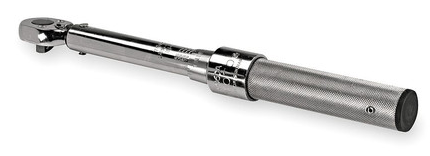A common question we get is whether or not flanged and bonneted valves need to be torqued when they are installed. Unfortunately, many of these questions are due to OSHA citations – Ideally you want to answer this question BEFORE the OSHA inspection.
The short answer is: Yes, you need to torque valves and bonnets to the manufacturer’s recommendations when you install them.
The long answer begins with a little history…
The 2005 version of IIAR-3 (Valves) section 5.8, states: “The applicable tightening torque values for the valve bonnet, flanges and other pressure-containing attachments to the valve shall be specified by the manufacturer and made available on request.”
Valve manufacturers went ahead and complied with this and every major valve manufacturer that we’re aware of published torque recommendations. The IIAR revised their wording in 2012 to “The applicable assembly and installation procedures for the valve bonnet, flanges and other pressure-containing attachments to the valve shall be specified by the manufacturer and made available on request.” However, the valve manufacturers had ALREADY posted the torque recommendations.
For some examples:
Parker/RS Danfoss Hansen
Those links would be the “applicable assembly and installation procedures,” right? Even the current version of IIAR-2 states that: “10.5.1 Valves (or flange sets) with specialized tightening requirements shall be installed according to manufacturer’s instructions.”
PSM also requires us to adhere to manufacturer’s instructions:
1910.119(j)(6)(ii) Appropriate checks and inspections shall be performed to assure that equipment is installed properly and consistent with design specifications and the manufacturer’s instructions.
In our opinion, and based on citation history, the belief that valve torque is NOT required is unsupportable. If the valve manufacturers removed all their torque requirements from published documents, then it’s possible the issue could be avoided. But honestly, that’s exactly what they are trying to do – Avoid the conversation. It’s really infuriating that the same people that wouldn’t think of installing a new head on their hot-rod without a torque wrench are the people that usually give you the most grief about valve torque.
The real question is: Is the flange or bonnet torque important? The answer to that is undeniably: Yes.
Over-torqueing pinches gaskets making leaks more likely and extreme over-torqueing on bonnets can warp them to the degree that it impairs the function of the valve or regulator.
You can’t torque old bolts reliably. Once you’ve torqued the bolt, you don’t go back and torque it again since the act of tightening a bolt actually stretches it minutely. Lubrication on bolts drastically changes the actual bolt tension for a given torque – you shouldn’t lubricate bolts that you are going to torque unless the torque specification specifically tells you to. Unless stated otherwise, torque specifications are assumed to be dry, clean and new threads

